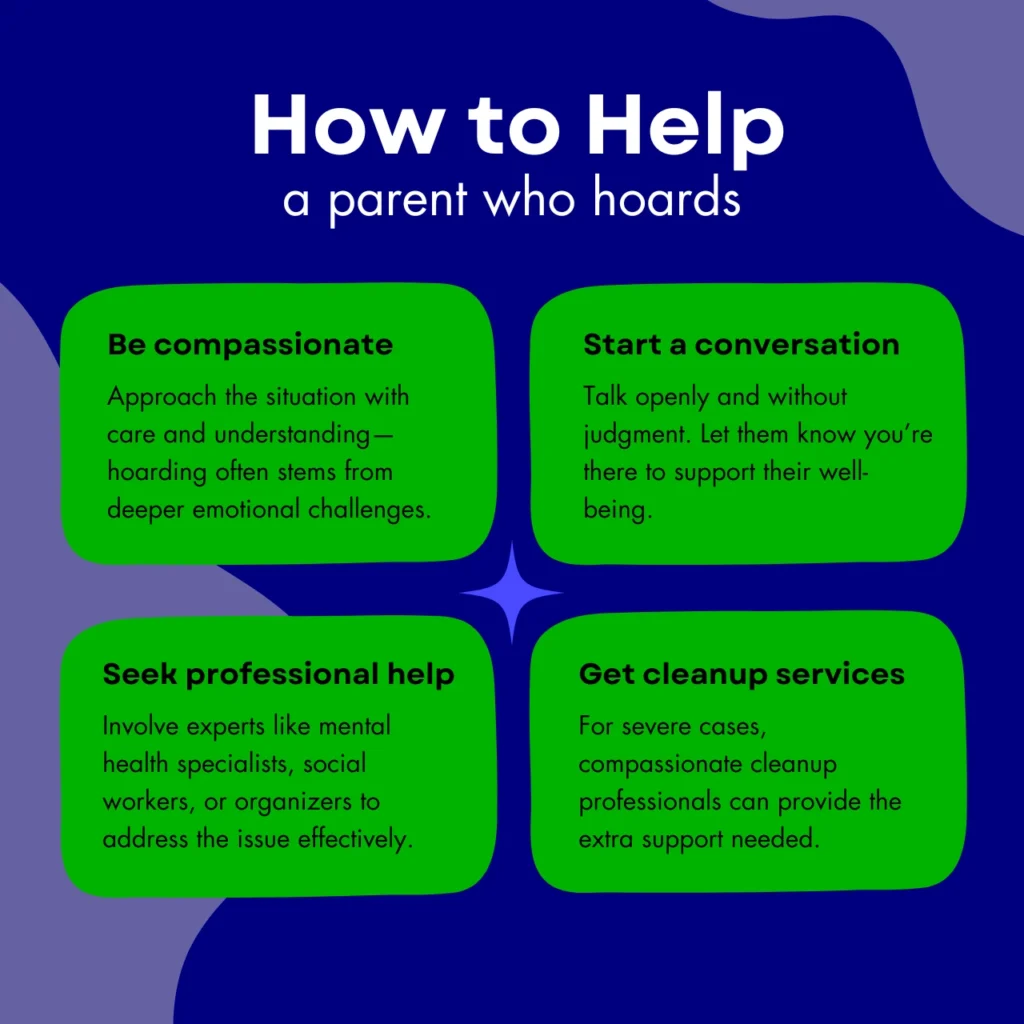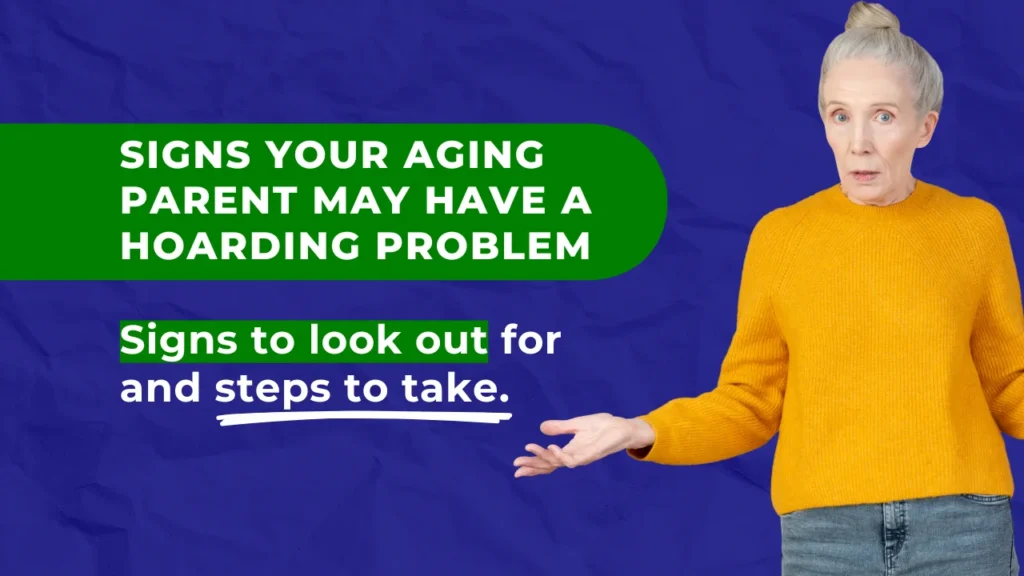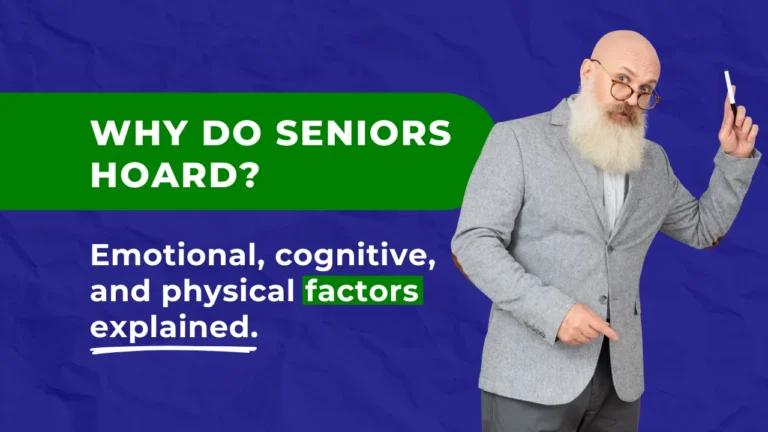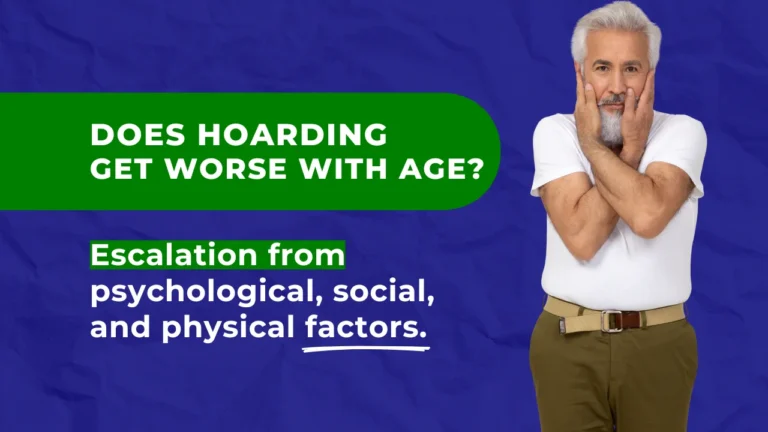As we get older, it’s normal to encounter challenges that include physical limitations and, in some cases, emotional volatility. What’s not as normal is the greater tendency to hoard items that have no value and are even outright hazardous.
Hoarding is more than just holding onto a few extra things; it’s a potentially serious problem that affects the health and safety of your loved one. The disorder is more common than you might think: studies estimate that between 2% and 6% of adults suffer from this condition. It’s particularly prevalent among older people, with three times as many adults aged 55 to 94 being affected.
Several underlying factors can explain why hoarding becomes more common with age, including cognitive decline, emotional attachments, and trauma. Understanding what causes hoarding in the elderly can help families take the right steps toward intervention.
How can you tell if your aging parent or relative is dealing with hoarding instead of being disorganized or messy? Here are some signs to look out for and practical steps to take.
Excessive Clutter in Living Spaces

One of the most obvious signs of hoarding is excessive clutter. If you notice that your loved one’s home has become increasingly crowded with items, to the point where furniture is blocked or rooms can’t be used for their intended purpose, it could be a sign of hoarding. For example, if the kitchen table is covered in stacks of newspapers and there’s no room to prepare food, it’s a major red flag.
Difficulty Discarding Items
Another sign of hoarding is an inability to throw things away, even items with little or no value. Your loved one may insist on keeping old magazines, broken appliances, or worn-out clothing because they believe they might need them someday. This reluctance to let go of things can lead to piles of unnecessary items accumulating in the home. If you’ve noticed that your loved one is keeping things they’ll likely never use, it’s worth paying attention to how this behaviour affects their life, particularly with senior hoarding becoming more common.
Acquisition of Unnecessary Items
Hoarders often continue to acquire items they don’t need, even when their homes are already overcrowded. For example, your loved one might have a habit of shopping at thrift stores or attending yard sales, where they feel compelled to buy items simply because they’re inexpensive or “too good to pass up.”
Over time, this behaviour leads to a home filled with things that serve no real purpose but take up valuable space. In some cases, the acquisition of items may become so compulsive that it’s impossible to walk through certain areas of the house without stepping over or around piles of belongings.
Emotional Attachment to Objects

Hoarders typically have a strong emotional attachment to their possessions, making it difficult to part with things. For some, each item represents a memory, a period in their life, or a potential use in the future. Even seemingly trivial items, like an old jar or a worn-out chair, can carry significant emotional weight.
Your loved one might become very upset or anxious at the thought of throwing something away, even if it’s broken or unusable. They may also assign sentimental value to objects that others would consider insignificant. If you notice this behaviour, it might be a sign that hoarding is becoming an issue.
Social Isolation

As hoarding progresses, it can lead to social isolation. The home, once a place of comfort and gathering, becomes a source of shame and anxiety. Your loved one may make excuses to avoid having people over and withdraw from social activities they used to enjoy because their focus has shifted to managing their possessions. Over time, this can lead to a complete withdrawal from social interactions. This isolation only exacerbates the hoarding behaviour, creating a cycle that’s difficult to break without intervention.
Health and Safety Concerns
In extreme cases, the clutter can become so severe that it creates hazardous conditions. Understanding the levels of hoarding can help identify the severity and necessary steps for intervention. Fire hazards are particularly concerning, as piles of paper, old furniture, and other flammable materials can quickly go up in flames. Moreover, blocked pathways can prevent emergency personnel from reaching your loved one in time, should they need assistance.
Unsanitary conditions also arise when perishable items are hoarded. For example, expired food, unwashed dishes, and garbage piles can attract pests like rodents and insects, leading to infections or respiratory problems. The buildup of dust, mould, and other allergens in a cluttered environment can exacerbate existing health issues, especially in older adults with weakened immune systems.
Increased Anxiety or Distress
Hoarding is often associated with anxiety and distress. Your loved one may feel overwhelmed by the clutter but powerless to do anything about it. The thought of discarding items can also trigger intense fear or panic, leading to procrastination and avoidance. They might express feelings of guilt, shame, or frustration about their situation but still be unable to let go of items. Hoarding and dementia can sometimes be interconnected, adding layers to the problem.
Decline in Personal Hygiene and Home Maintenance
As hoarding behaviour escalates, you might notice a decline in your loved one’s personal hygiene or the general upkeep of their home. They may have difficulty cleaning or maintaining their home because the clutter is so overwhelming. Similarly, they might neglect their own self-care, such as bathing or grooming, because their focus is entirely on their possessions.
For example, your loved one might stop using the bathroom or kitchen sinks because they are piled high with items, forcing them to find alternative and often unhygienic ways to manage their daily needs. In severe cases, the inability to maintain cleanliness can lead to serious health issues, including infections, sores, or even bedsores if they spend a lot of time in one area that is cluttered and unsanitary. These changes can be warning signs that hoarding is taking over their life.
Defensive or Secretive Behaviour
If your elderly loved one becomes defensive or secretive when you bring up the condition of their home, it could be a sign of hoarding. They may avoid answering questions about their possessions or refuse to let you see certain areas of their home. This behaviour often stems from shame or denial about the problem. If your loved one is reluctant to discuss their living conditions, it’s important to approach the situation with understanding and compassion.
Financial Strain
Hoarding can also lead to financial problems. For instance, your loved one may accumulate credit card debt by purchasing items they don’t need or can’t afford, all while neglecting essential expenses like utilities, medical bills, or mortgage payments. The clutter can make it difficult to keep track of bills or important documents, leading to missed payments, late fees, and even the risk of losing their home. In such cases, the financial strain becomes yet another layer of stress that compounds the hoarding problem.
How to Approach the Situation

If you recognize some of these signs in your aging loved one, it’s important to approach the situation with sensitivity and care. Hoarding is often tied to deeper emotional or psychological issues, and addressing it can be challenging.
Start by having an open and non-judgmental conversation with the person about your concerns. Let them know that you’re there to support them and that you want to help them improve their living conditions for their well-being. It’s also helpful to involve professionals who specialize in hoarding situations, such as mental health professionals, social workers, and professional organizers. Sometimes, it may be necessary to seek help from a compassionate hoarder cleanup service.
For more details on how to help seniors with hoarding problems, consult our guide.
Do You Need Hoarder Cleanup Services?
Recognizing the signs of hoarding in an aging loved one is the first step toward helping them reclaim their space and improve their quality of life. If you’re concerned that someone you care about may be struggling with hoarding, don’t wait to take action—contact WeMove-It.com for efficient and compassionate hoarding services in Toronto that provide professional cleanup solutions tailored to their needs. For more information or a free estimate, contact us today.



